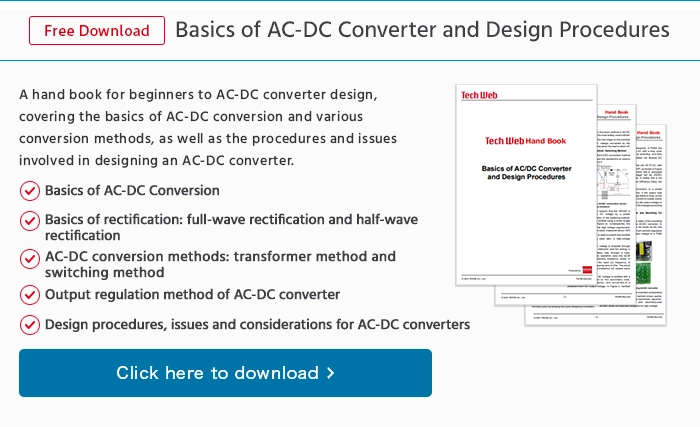Light load mode
What is light load mode?
Light load mode is a technology that improves efficiency at light loads (when the output current is small). In DC/DC converters and other devices, it is sometimes referred to as burst mode.
Light load mode
Switching AC/DC and DC/DC converters supply a stable output voltage by performing chopping via ON/OFF switching then smoothing using a capacitor.
However, momentary current leakage (through-current) is generated during ON/OFF switching. In other words, the more ON/OFF switching operations per unit time, the greater the loss due to leakage current and lower the efficiency.
When the period is constant (PWM control) the number of switching operations per unit time is constant even if the ON/OFF time ratio changes. Consequently, the (self) power consumption is also constant, resulting in decreased efficiency due to loss caused by leakage current generated during switching at light loads. Therefore, at low current (light load) it is preferable to use PFM control which slows down and lengthens the period, reducing the number of ON/OFF switchings per unit time in order to minimize loss. This technology is called light load mode.

[PWM and PFM Operation]
Switching between PWM control featuring a constant period at heavy loads (large current) and PFM control that changes the period at light loads (low current) depending on the conditions makes it possible to further improve efficiency.
■ PWM (Pulse Width Modulation)
A control method that produces the output equivalent from the input voltage at a constant frequency by turning the switch ON.
■ PFM (Pulse Frequency Modulation)
A method for generating the equivalent output by changing the frequency (OFF time) while keeping the ON time constant. There is also a type that varies the ON time while keeping the OFF time constant.
PWM and PFM
The PFM method delivers superior efficiency by changing the frequency based on the output current, but noise generated during switching can become irregular. This type of noise, in which the frequency cannot be specified, is difficult to remove, making PWM control featuring a constant frequency more suitable when dealing with noise.
As such, taking advantage of the trade-off relationship between PWM that minimizes noise and PFM that provides high efficiency by switching to PWM during heavy loads when driving at high frequency (which generates a lot of noise) and PFM at light loads with low current consumption allows users to maximize efficiency throughout the entire load range.





